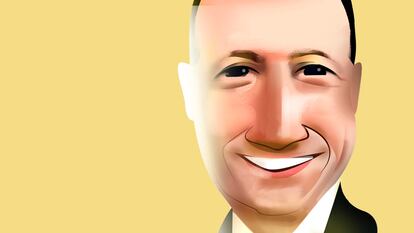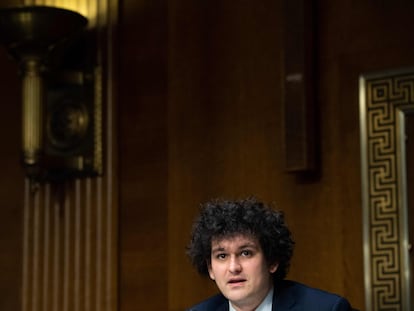Following the FTX bankruptcy, an expert liquidator has been searching for all the missing money
John Ray III – the legendary attorney who oversaw the liquidation of Enron – is trying to track down the lost cryptocurrency investments of more than a million people

John Ray III has a reputation as a bulldog. The 63-year-old American attorney and insolvency professional has spent decades picking through the bones of bankrupt companies, trying to achieve justice for his clients.
From banks to billionaires, Ray has done battle with every kind of powerful person and institution, in order to help creditors and investors recover at least some of their money from insolvent companies.
Last month, he was commissioned to lead FTX – the cryptocurrency exchange that filed for bankruptcy on November 11, in a move that sent shockwaves through the markets. But the bulldog has one problem: he still doesn’t know where to bite.
When Ray presented his 40-year-long CV to the court handling the FTX bankruptcy filing, he made the following statement:
“I have been director of restructuring in some of the largest corporate bankruptcies in history. I have overseen situations involving allegations of criminal activity and embezzlement (Enron). I have also overseen situations involving novel financial structures (Enron and Residential Capital) and cross-border asset recovery and maximization (Nortel and Overseas Shipholding).”
In exchange for a retainer of $200,000 – along with a fee of $1,300 an hour – Ray will use his experience to follow the trail of money that was lost following the collapse of FTX. The challenge, however, is more difficult than anything he could imagine.
“Never in my career have I seen such a complete failure of corporate controls and such a complete absence of reliable financial information,” he told the court. “The concentration of control in the hands of a very small group of inexperienced, unsophisticated and potentially compromised individuals is unprecedented.”
Ray – born in Pittsfield, Massachusetts – is the son of an industrial plumber, who worked for General Electric. He studied Political Science at the University of Massachusetts, Amherst, where he graduated cum laude in 1980. Initially tempted by politics, he started out as an intern in the office of Democratic Senator Ted Kennedy. But he then decided to shift his focus, enrolling in law school at Drake University, in Des Moines, Iowa. He graduated with the second-highest grades in a class of 178 students.
The FTX liquidator began his legal career at an accounting firm in Omaha, Nebraska. In the mid-1980s, he made the leap into the business world, first in the field of waste management in California, before eventually finding his calling in bankruptcies.
His first success was with Fruit of the Loom – a major American clothing manufacturer. When he arrived at the company, it was going through a financial crisis due to excess debt. He ordered a suspension of payments to vendors, sued the previous company president and oversaw the sale of all assets to Berkshire Hathaway – Warren Buffett’s investment firm. It still remains the principal shareholder in Fruit of the Loom.
Having made a name for himself in bankruptcy and restructuring, he participated in several other projects before his big break: Enron. The bankruptcy of the Texas energy giant was one of the biggest scandals in US business history.
Ray took over as CEO from 2004 to 2009, untangling a mess of financial contracts and selling off valuable assets. With no ties to Wall Street, he sued the banks, whom he considered partially responsible for the company’s collapse. Ray ended up reaching agreements with all of them: he recovered about $22 billion in total, so that the company’s creditors were able to recover 53% of their money. They hadn’t even expected to see 17% returned.
After Enron, he took on other high-profile bankruptcies, including Canadian technology giant Nortel and the mortgage firm Residential Capital – both victims of the 2008-9 financial crisis. In both cases, he recovered as much money as possible for creditors, investors and terminated employees, many of whom lost their pensions during the initial bankruptcy filings. He currently runs his own restructuring firm: Owl Hill Advisory, LLC.
At FTX, the bulldog has encountered a real mess. He doesn’t know how much money the platform has, how much debt it owes or even who all the employees are. It’s a firm without reliable accounts – payments and salaries were approved in group chats with emoticons. The cryptocurrency trading platform – the largest in the world – had practically no security measures, no control over digital assets and no proper registration or documentation regarding investments and real assets. Ray has however, found suspicious outflows of money.
The founder and main shareholder of FTX – 30-year-old Sam Bankman-Fried, a major donor to the Democratic Party – has taken off to the Bahamas, where the liquidator believes FTX has illicitly utilized funds to buy houses and other personal items for management, employees and advisers.
The liquidator’s brief before the court is a tome of corporate nonsense, drafted by Bankman-Fried and his partners, who may have overseen up to $10 billion at one point. All of them are suspected of using their clients’ funds to carry out high-risk operations, inappropriately putting up digital assets as collateral. It is estimated that around 100,000 crypto investors and traders may have been affected by their actions. Many have lost their life savings with the termination of the trading platform.
Despite the confusing shambles of FTX, John Ray III is smart, patient and stubborn. He has slowly been drawing up a map of the company, hiring cybersecurity experts and financial advisers to assist him. Reportedly, he has begun to smell the scent of fraud. If his record serves as any precedent, he will not give up until he recovers ever last dollar within reach for the victims of this disaster.
Tu suscripción se está usando en otro dispositivo
¿Quieres añadir otro usuario a tu suscripción?
Si continúas leyendo en este dispositivo, no se podrá leer en el otro.
FlechaTu suscripción se está usando en otro dispositivo y solo puedes acceder a EL PAÍS desde un dispositivo a la vez.
Si quieres compartir tu cuenta, cambia tu suscripción a la modalidad Premium, así podrás añadir otro usuario. Cada uno accederá con su propia cuenta de email, lo que os permitirá personalizar vuestra experiencia en EL PAÍS.
¿Tienes una suscripción de empresa? Accede aquí para contratar más cuentas.
En el caso de no saber quién está usando tu cuenta, te recomendamos cambiar tu contraseña aquí.
Si decides continuar compartiendo tu cuenta, este mensaje se mostrará en tu dispositivo y en el de la otra persona que está usando tu cuenta de forma indefinida, afectando a tu experiencia de lectura. Puedes consultar aquí los términos y condiciones de la suscripción digital.
More information
Archived In
Últimas noticias
Most viewed
- Sinaloa Cartel war is taking its toll on Los Chapitos
- Oona Chaplin: ‘I told James Cameron that I was living in a treehouse and starting a permaculture project with a friend’
- Reinhard Genzel, Nobel laureate in physics: ‘One-minute videos will never give you the truth’
- Why the price of coffee has skyrocketed: from Brazilian plantations to specialty coffee houses
- Silver prices are going crazy: This is what’s fueling the rally











































